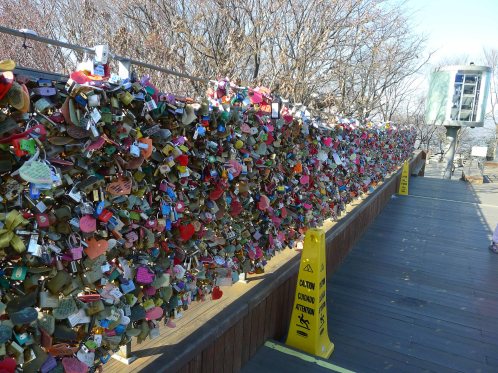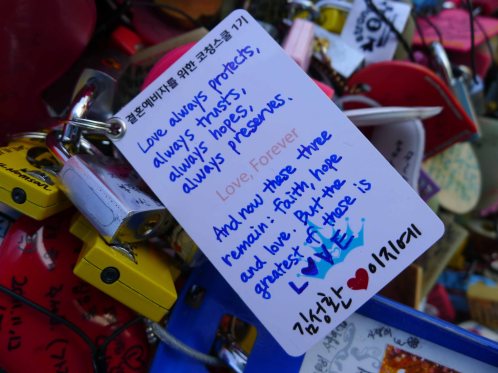Category: architecture
Sketching in Hot Spring Museum
 It’s almost the end of another semester, so I figured I might as well upload one of the sketches I’ve done for the Architectural/Analytical Sketching class. I’m not very good at sketching, which was the reason I enrolled for the class, and I think I’ve picked up a few great tips from the professor. My work is of course a far cry from how my professor draws, but I think I’m starting to understand better the sketching process, like using prisms or solid forms as foundation of drawing details.
It’s almost the end of another semester, so I figured I might as well upload one of the sketches I’ve done for the Architectural/Analytical Sketching class. I’m not very good at sketching, which was the reason I enrolled for the class, and I think I’ve picked up a few great tips from the professor. My work is of course a far cry from how my professor draws, but I think I’m starting to understand better the sketching process, like using prisms or solid forms as foundation of drawing details.
Actually today sketching session in Beitou Hot Spring Museum, the visiting tourists who saw us draw would often stop nearby and watch us draw. I was a little embarrassed of my work, but at the same time I felt good because people took notice of what we were doing. The first one to approach me was a Taiwanese lady, who asked which school we were from, and I replied that we were from NTUT. Then she asked if the lettering was done by me (I said yes), because she said the lettering and sketch were good. At the back of my mind, I was thinking why she’d think the lettering was good, but perhaps she did not realize I was a foreigner and can therefore read and write English more “naturally” than the local Taiwanese. I’d been speaking to her in Mandarin, so she might have assumed I was a local too. XD
Then there was one Caucasian guy who asked for my permission to photograph my work, even though I was only halfway through my sketches. Then a group of Koreans asked what I was drawing, and I answered that I was doing architectural sketches. They seemed somewhat “impressed” (for the lack of a more appropriate word) of what we were doing in the museum. Perhaps it’s not often that people sketch in tourist spots like the museum?
Anyway, it really did feel good to get some feedback from strangers. They were a great encouragement for me to keep on sketching until almost the end of the class. My own and other people’s perceptions on what qualifies as “good” work vary, and it’s a reminder for me that even if I can’t draw well now, I just have to practice more to get it right next time.
Love in Seoul Tower
I’ve actually written one draft post about the symbolism used in relation to love (which I haven’t finished writing due to insufficient research), and then I remembered some of the photos I took while on a family vacation to Seoul, South Korea in December 2011. We had visited N Seoul Tower in Namsan (South Mountain), the tallest point in Seoul. There we saw thousands of locks that hung from the fences, because of the custom that if a couple would lock a padlock together in that public space, their love would be “locked forever.” Well, I didn’t have a lock with me, so I couldn’t try that custom, but I think one of my acquaintances did put a padlock there when she visited with her boyfriend.
Me posing with the “tree” covered with love padlocks.
Apparently, some people also took to vandalizing objects in the area and wrote about their love. Since I can’t read Korean hangul, I have no idea on whether those characters are the names of the people who vandalized the binoculars. Yes, it might seem to be romantic to leave behind “evidence” that you’ve been to a certain place to declare eternal love, but I don’t think it’s appropriate to vandalize public property.
That’s my cousin (she can totally pass as a Korean, right?).
A giant metal heart sculpture. Really I’m surprised how they got that big object to stand on such a small base.
I actually find this love padlock custom interesting, because the couples who visit there are holding on to the hope that their love for their partner will last forever. The padlocks represent exactly just that—hope. The sheer number of padlocks to be seen there attest to the wishes and dreams of people who love (if not romantically, then at least for their family and friends), despite the possibility of losing the people they love.
Observing Love part one
Before I even thought of writing about my own interests, I was already inspired by many people who were doing their own thing, because they had the passion for it. What they do may not make sense to us (if not now, maybe never at all), nor will it be fully appreciated, but sometimes they just don’t care what other people think. They are happy doing/creating something, and that’s what really matters.
I’m pretty sure you’ve met someone like that in your life—perhaps a stranger doing spray art in the street (there’s one like that in Ximending actually), a distant relative, an odd classmate or colleague—maybe you’re even one of them. But I’m not saying that it’s good or bad, I just wish to state the existence of these type of people.
Personally, I respect people who, despite the criticisms they receive from others, have made it a point to stand firm in their beliefs, and approach their craft as something valuable to mankind. I don’t have a specific Top Ten list or anything, but I’d like to mention a few people whom I’ve met (if not physically, at least I’m acquainted with them through social networks) that exhibit passion.
Architect Francisco “Bobby” Mañosa
Arch. Mañosa, a Filipino architect and National Artist, is renown for his love of Filipino culture. His architectural designs definitely mirrors that love, and I really admire him for sticking to that belief. I have had the opportunity to meet the legendary Arch. Mañosa in October 2011, when he toured our board exam review class around his house. I admit to being starstruck by him back then, but I was more impressed by how he showed off about the Filipino culture and lifestyle. And he was definitely successful in representing that through his architecture. He actually advocates the existence and the practice of designing Filipino, even though people would argue otherwise.
Indeed, even I am a little hesitant to claim what exactly is designing Filipino, having no firsthand experience of living in bahay kubo (a small hut usually elevated a few meters from the ground) until I visited a distant relative in the province almost 4 years ago. Yes, I knew the basics of what the traditional Filipino house looked like, but I never knew how the people truly lived. And Arch. Mañosa explained how his design accommodated the traditional Filipino lifestyle.
For example, the house was elevated to almost a full storey high. The kitchen actually faced the main gate, rather than the front door (which was a little to the side), because people in the kitchen would easily see anyone who might ring the doorbell. Also, there were very few doors between every room—the only ones that had an opaque door were the washrooms and the bedrooms. That way, people can conveniently move around the house, and to encourage good air ventilation.
The living room was set in the center of the house, partially enclosed by walls and is illuminated through clerestory windows. Around this living area were several sets of informal tables and chairs, benches. There was no specific dining table in sight—Arch. Mañosa explains that they prefer the freedom to choose wherever they want to sit and eat. They did not need to be confined to one specific table in order to partake of their food.
The building materials used in his house were organic and native; the way he used bamboo is noteworthy and impressive. Decorative elements in his home were diverse, from wooden spoons, shells/conches, to framed photographs. Arch. Mañosa also showed us the playroom and outdoor custom-made bahay kubo of his grandchildren, demonstrating that he doted on the kids. Even the room in which he uses to relax and watch TV has a miniature table and chairs, most likely to accommodate the kids. Truly, the house was family-oriented, even the shed underneath the main floor of the house were filled with lounge chairs and furniture that encourages interaction between people. There’s even a “treehouse” built in one of the big trees in their yard, to allow people to interact with nature as well.
Indeed, despite the growing trend towards modern architecture, Arch. Mañosa has always been committed to designing Filipino. He is confident about and proud of his identity as a Filipino, and is encouraging everyone else in the country to be the same. I do hope that somehow this incredible passion would rub off on me, and I could treat my craft as a way of expressing my ideals, values, and hopes to others.












